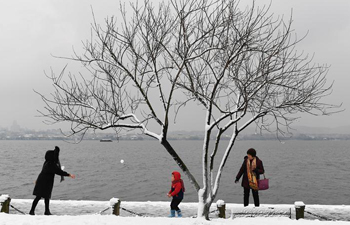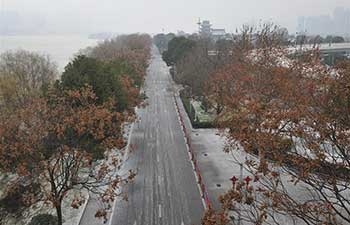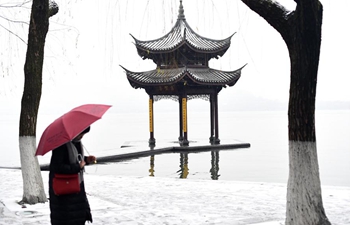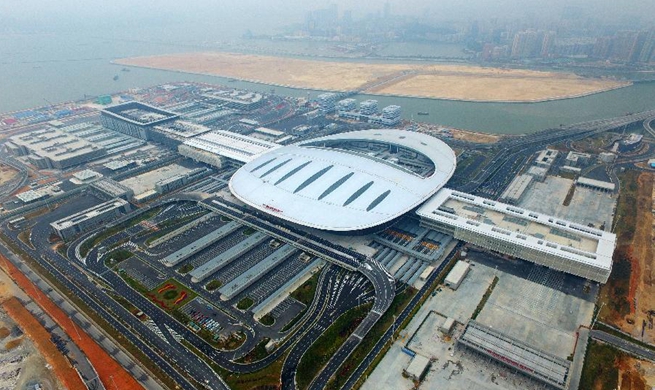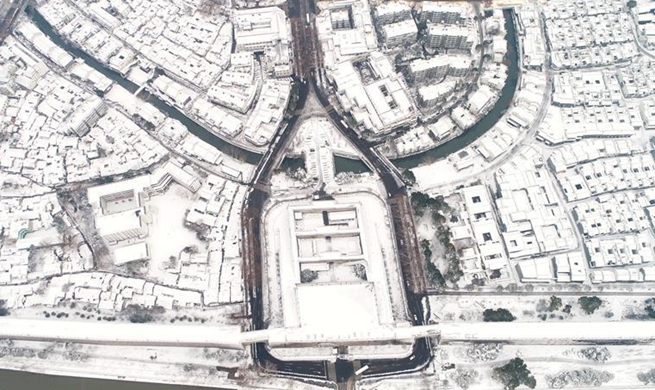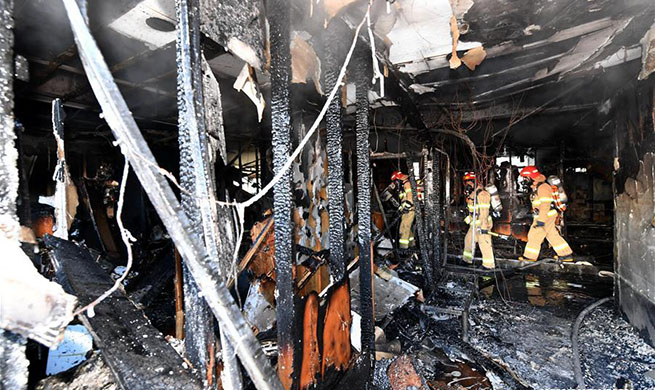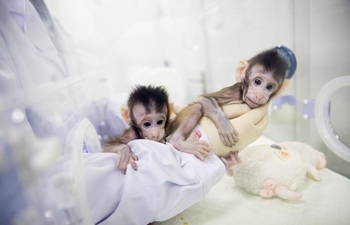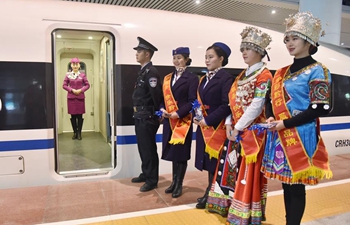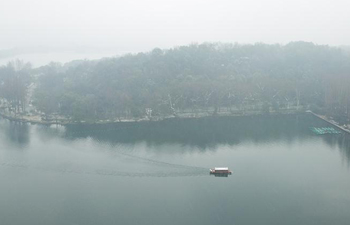ISLAMABAD, Jan. 27 (Xinhua) -- The State Bank of Pakistan (SBP) has raised its key discount rate by 25 basis points to 6 percent, the first increase in four years.
The Pakistani central bank had been sustaining its policy rate at 5.75 percent for the last one and a half years. It had reduced the key interest rate by 25 basis points in May 2016. The State Bank had revised upward its benchmark interest rate by 50 basis points in November 2013.
Governor State Bank of Pakistan Tariq Bajwa cited the recent slump in the value of Pakistani rupee against the greenback as the main catalyst behind the raised interest rate.
The move was largely expected by the stakeholders in the Pakistan Stock Exchange (PSX).
Fahad Qasim at Topline Research informed Xinhua on Friday evening that the shift in the monetary policy stance might be due to the depreciation of Pakistani rupee and higher inflation expectations as well as the country's deteriorating balance of payment.
He further stated that the 5 percent currency devaluation in December 2017 was the first phase while the second phase of a similar magnitude is expected in the second half of Financial Year 2018. The second phase might leave Pakistani rupee at 115 rupees against U.S. dollar by June 2018, which would be 10 percent decline in its value in the FY18, he added.
He went on to argue that due to the expected depreciation, inflation figure is likely to increase up to 5.2 percent in FY18 and 6.5 percent in FY19 as against 4.2 percent in FY17.
During December 2017, inflation surged by 4.7 percent, thereby reducing real interest rates to 1 percent as compared to last two years average of 1.9 percent, he said adding that inflation is expected to pick up further on account of rising oil prices and currency devaluation.
It is important to mention here that Pakistan's current account deficit during the first half of Financial Year 2018 stood at 7.4 billion U.S. dollars as against 4.7 billion U.S. dollars recorded during the same period of last year. The current account deficit is likely to be at around 14 billion U.S. dollars at the end of the ongoing fiscal year, which would be higher than last fiscal year's current account deficit of 12 billion U.S. dollars.
Four key factors of Pakistan's economy have witnessed important changes since November 2017 impinging upon the policy rate decision, the State Bank governor said in a statement.
"Firstly, Pakistani rupees has depreciated by around 5 percent. Secondly, oil prices are hovering near 70 U.S. dollars per barrel. Thirdly, a number of central banks have started to adjust their policy rates upwards adversely affecting Pakistani rupee interest-rate differentials vis-a-vis their currencies. Fourthly, multiple indicators show that the output gap has significantly narrowed indicating a buildup of demand pressures," according to the statement.
Based on these developments, the Monetary Policy Committee is of the view that in order to preempt overheating of the economy and inflation breaching its target rate, this is the right time to make a policy decision that would balance growth and stability in the medium- to long-term, Tariq Bajwa added.





